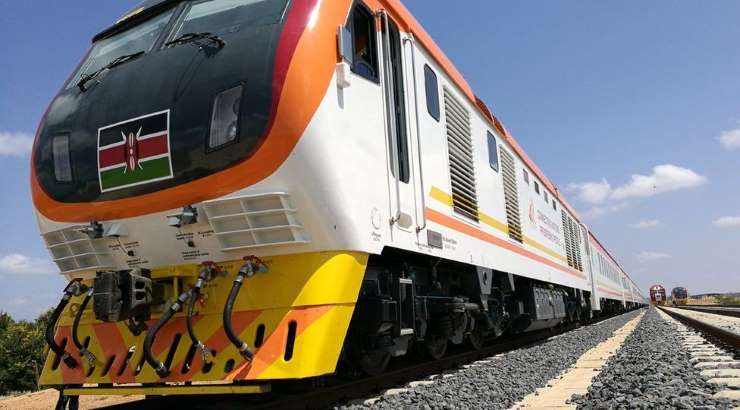Features
Economic Benefits of Kenya’s Standard Gauge Railway
The railway is designed to enhance transport operations in the country.

The Kenya Standard Gauge Railway (SGR) has been the largest transport infrastructure project in the country since its independence.
The facility is designed to enhance transport operations in the country and beyond to boost development and economic growth in line with the Kenya Vision 2030.
Phase one of the project extending from Mombasa-Nairobi was completed in May 2017 and is now fully operational with 14 freight and 4 passenger trains.
At 14 cargo trains, the Nairobi-Mombasa SGR has already hit its 2025 container transportation target as per its original design plan. This means it has achieved its eight-year target in one year – which is quite an impressive accomplishment.
With such success, the positive impact of the SGR on the Kenyan economy is likely to be felt soon and its objective to grow the country’s GDP by 1.5 per cent might be realised earlier than expected.
Here are the key benefits of the SGR to the Kenyan economy:
1.) Job creation
Top on the list of positive effects of the SGR project to the economy is job creation.
From individuals employed in the construction sector to the 2,285 staff from diverse professional backgrounds working at the 33 stations and in the passenger and cargo rolling stock, the project has generated numerous job opportunities.
Furthermore, there is indirect job creation through entrepreneurship opportunities posed by the need for goods and services by SGR employees and passengers including catering, and entertainment among many others. Spending by these employees is set to create ‘income effects’ on the economy.
2.) Increased industrialisation
Immense opportunities for construction-related industries have arisen as demand for materials such as cement, steel, stone, aggregates and glass required for construction of the line and stations increases.
With the ease of transporting goods and increased markets due to a new network of trading routes, more manufacturing and processing plants in other sectors such as agriculture, forestry, fishing, and mining will naturally crop up.
3.) Reduced cost of doing business
Currently, the costs of transport for imported and exported goods in East Africa account for 40% of total cargo charges.
With the new railway line, transport costs have dropped significantly owing to economies of scale since a single train can haul 216 20-foot containers in a single trip, which would otherwise require the engagement of 108 trucks.
Besides, travel time has been reduced while accidents and cargo pilferage common in road transport have been eliminated which translates to a lower cost of doing business.
RELATED: Negative effects of SGR on the Kenyan economy
4.) Urbanisation along its route
Just as the arrival of the lunatic express resulted in the mushrooming of urban centers, a major impact of the SGR on the Kenyan economy will be the emergence of trading centers at all its 33 stations as well as a reinvigoration of economic activities in already existent towns.
With Kenya’s economy being market-based, the emergence of these centers will boost growth in its key sectors including agriculture, manufacturing, tourism and financial services.
5.) Improved tourism opportunities
Tourism is a major contributor to the country’s GDP and the fruition of the SGR could not be more opportune, coming at a time when international arrivals have dwindled due to security concerns.
The coast region is the most popular destination for local tourists but challenges associated with road travel have been a major hindrance to the realisation of full domestic tourism potential.
The entry of a low-cost, comfortable, fast and safe mode of transport to Mombasa coupled with the breathtaking scenery along its route, especially the stretch that traverses the Tsavo National Park, home to a wide variety of wild animals, has boosted the number of domestic and international tourists visiting the region.
6.) Improved regional trade
Kenya neighbours three landlocked countries – Uganda, Rwanda and Burundi – and fast clearance at the Mombasa port, reduced transport cost, and faster delivery of goods will make the country the preferred entry point and export route for these nations thus positively affecting the economy.
7.) Reduction of road maintenance cost
The heavy weight of trucks has been a major contributor to the wear and tear of roads across the country especially considering that 95% of all cargo moves by road with over 1600 heavy-load trucks plying the Mombasa-Malaba route.
This means roads are in constant need of maintenance at exorbitant costs. With SGR set to take over, freight haul trucks will be phased out of the roads thus enhancing their longevity.
Concisely, the effects of the SGR on the economy during and after development are numerous and a gleaming symbol of progress towards the achievement of Vision 2030 goals.














